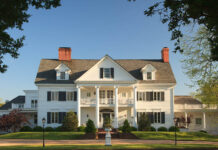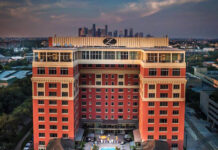With hotels performing at near-peak levels across the country and projections showing this should continue for years, speakers at the Lodging Conference last week had a hard time containing their rational exuberance. During one of the opening sessions, Mark Woodworth, president of PKF Hospitality Research, said that 14 of 55 U.S. markets are seeing their highest occupancies ever this year, and 49 of the same 55 will see occupancies well above long-run averages. “August year to date, the hotel industry reported $90.8 billion in rooms revenue—the highest ever recorded during the eight-month period,” said Vail Brown, STR’s VP of global business development and marketing, during the same session.
The fundamentals are strong in the industry with demand high and supply low. Combine this with low interest rates, plenty of interested hotel investors, and strong pricing for hotel real estate, and there’s plenty to fuel this stretch of industry health. And when it comes to next year? “Your concerns going into 2015 depend on what your core business is,” said Joel Eisemann, IHG’s chief development officer. “If you’re an owner or operator, you’re optimistic. If you’re a private equity fund looking to buy assets, you may have different concerns. The market is pretty frothy because of a lot of capital pursuing deals. I’ve heard about a lot of people who say pricing may be getting to a point where they move to the sidelines.”
“There’s been a lot of growth going on in the urban markets, and now you’re about to see that going on in the secondary and tertiary markets,” said Choice Hotels SVP of Global Development David Pepper. Like many of the conference speakers, he saw real opportunity to push ADR this year and next. The other hot topic was doing a better job of leveraging guest experience to drive development. “The sociability of the hotel experience is now becoming popular at all chains and not just a few of them,” said FelCor Lodging Trust Chairman Tom Corcoran. Speaking on the trend of more open lobbies in select-service properties, he added, “The only option to make money in the lobby is if your guests eat or drink more.” So these trends often make good business sense as well.
During the quarter we achieved RevPAR growth of 8.9 percnt driven by an increase in occupancy and average daily rate. Occupancy increased 282 basis points to 71.7 percent while ADR grew 4.6 percent. Year-to-date through the third quarter, our RevPAR is up 7.9 percent from the prior year, driven by a 195 basis point increase in occupancy and a 4.8 percent increase in ADR.
This was echoed in the third-quarter numbers that La Quinta Holdings, Wyndham Worldwide, Carlson Rezidor, and Choice Hotels International posted at the end of the week. La Quinta reported RevPAR growth of 8.9 percent, average occupancy of 71.7 percent, and an increase in ADR 4.6 percent in the third quarter. The company also forecast 45 to 50 hotel openings per year. Wyndham reported hotel revenues up 6 percent to $315 million during the third quarter, with RevPAR getting a 4.6 percent boost, on average, across the brand portfolio. At Carlson Rezidor, RevPAR grew by 3.5 percent during the quarter, with revenue up 5.9 percent. Finally, Choice reported a system-wide RevPAR increase of 8.8 percent.
Looking at the bigger picture, Bernard Baumohl, chief global economist at The Economic Outlook Group, kicked off the second day of the Lodging Conference by laying out the dynamics at the heart of U.S. economic growth. “When it comes to the U.S. economy, I believe there are grounds to be very optimistic,” he said. “We may be in the middle of what could end up being the longest economic expansion in U.S. history.” He added that the drop in gas prices at the pump has provided consumers with an extra $50 billion in spending money since June.”










